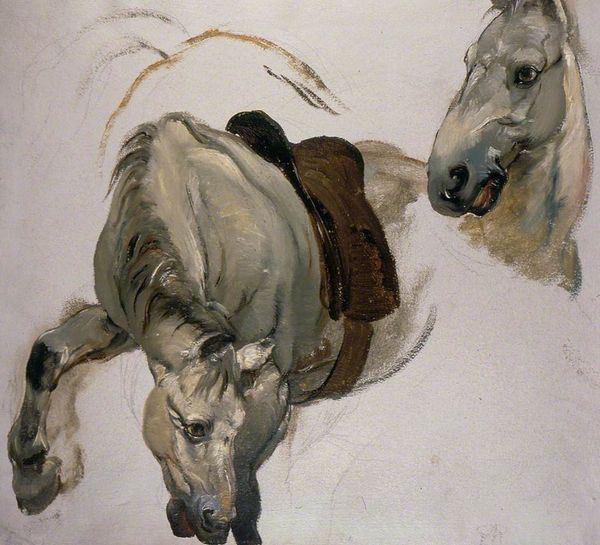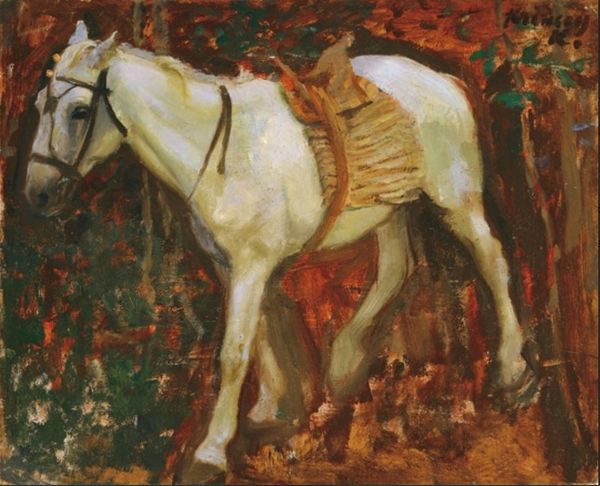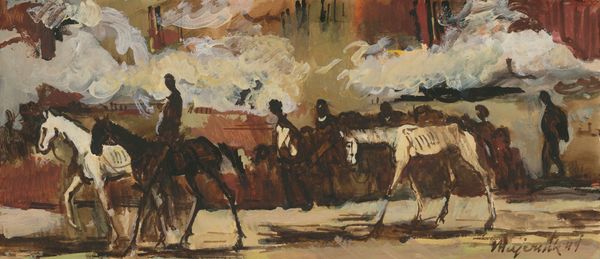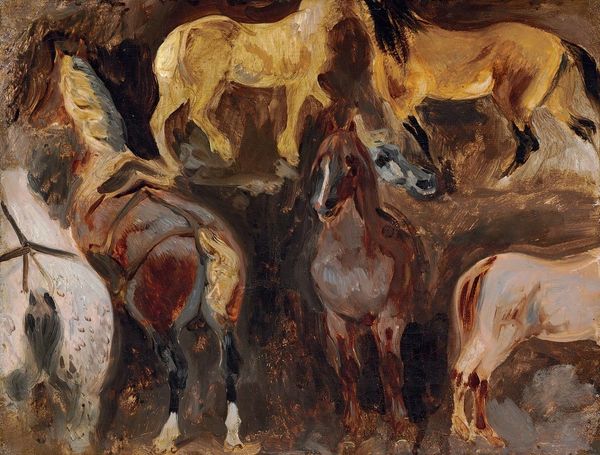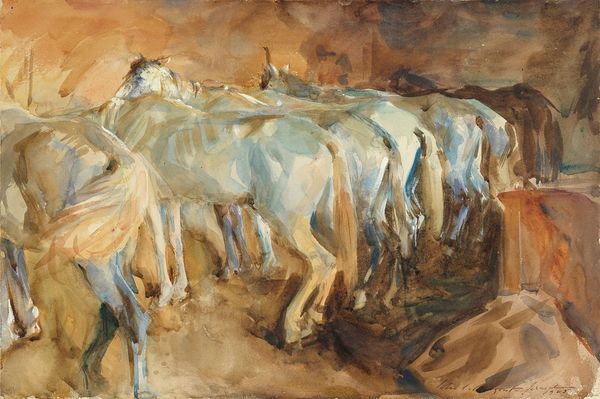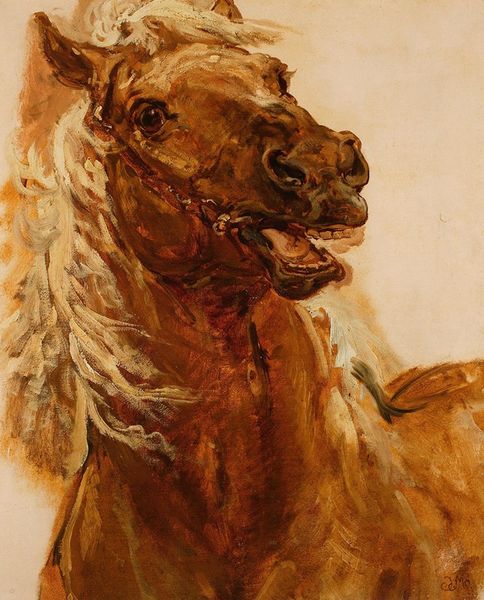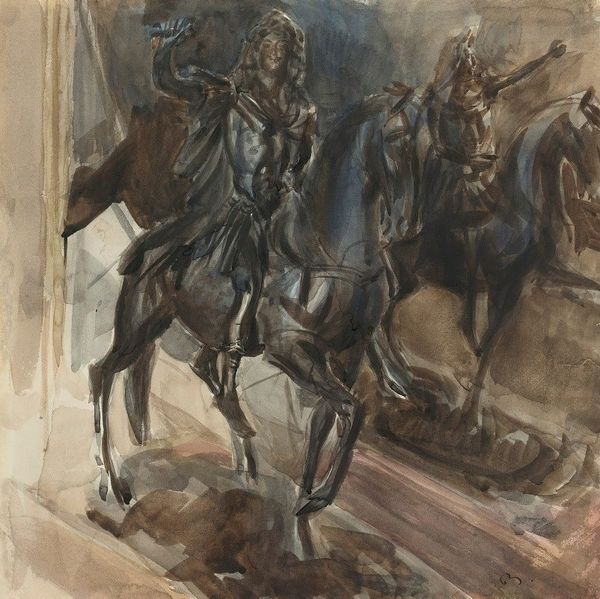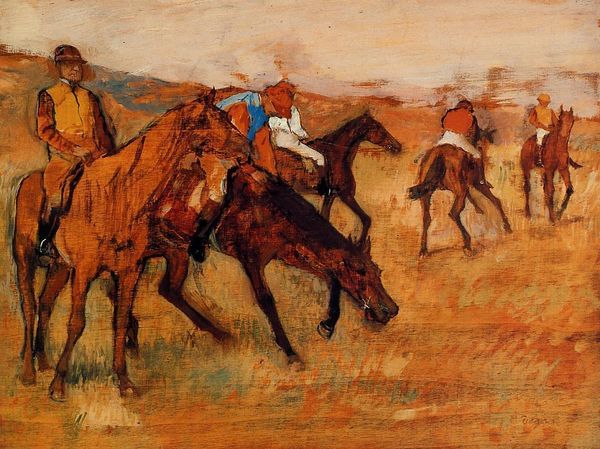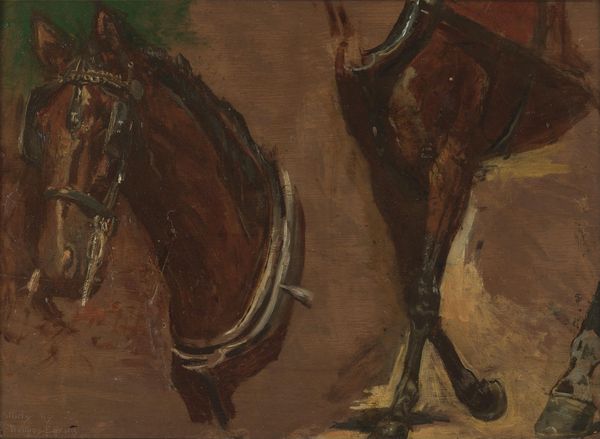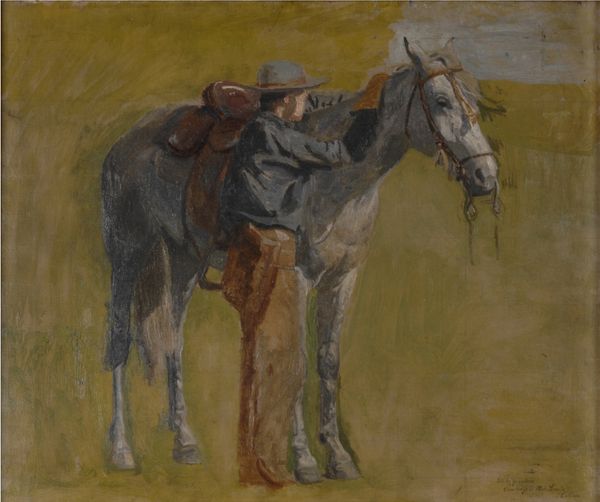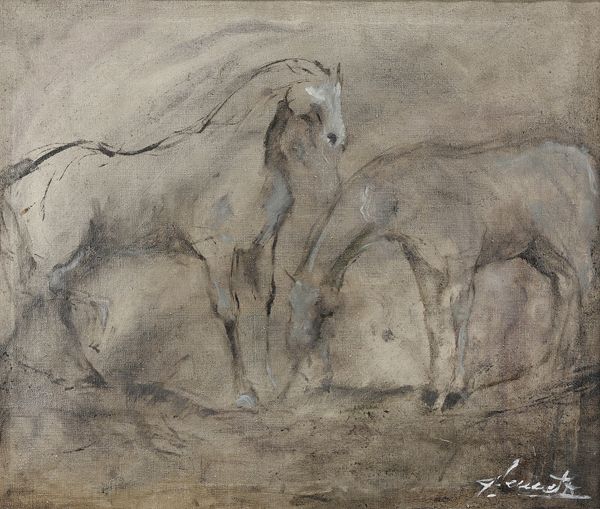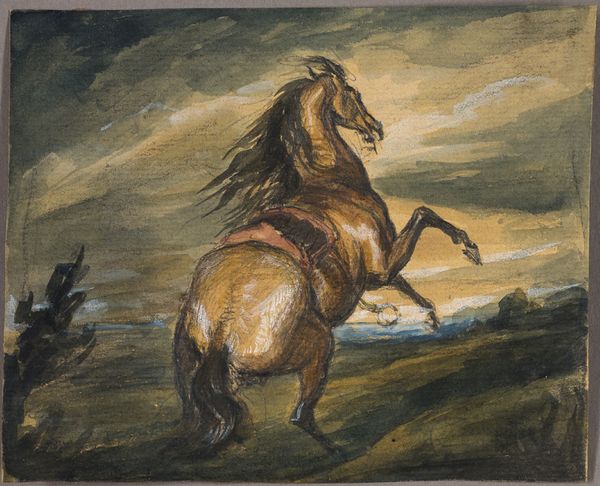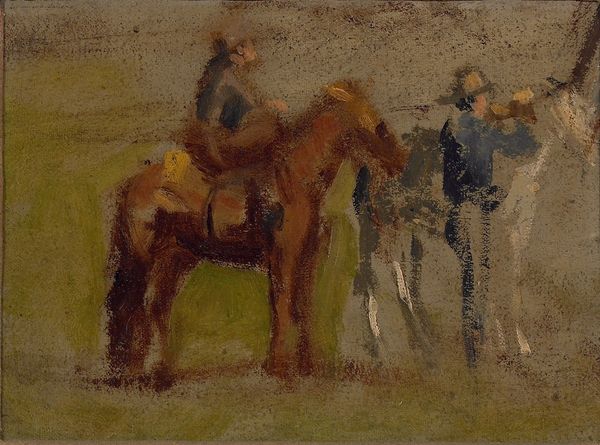
drawing, oil-paint, impasto, charcoal
drawing
animal
oil-paint
charcoal drawing
oil painting
impasto
underpainting
charcoal
realism
Copyright: Public Domain: Artvee
Curator: Standing before us, we have Ernest Meissonier's "Studien eines Schimmels," created around 1864. The piece employs oil paint with impasto and charcoal to study a saddled horse, rendered in striking detail. Editor: It gives off a melancholic vibe. The horse almost looks ghostly against that burnt-orange backdrop, like a memory fading at the edges. The cropped hindquarters make me uneasy; is this horse coming or going? Curator: Let's break it down. The texture is paramount. The thick impasto, particularly noticeable on the horse's coat and the red saddle, emphasizes the materiality of the paint itself. Meissonier isn't trying to deceive us with illusion; he showcases the artifice. Editor: But even that artifice speaks to a certain reality. This "study" makes me question whose reality it serves. Considering Meissonier’s historical genre scenes glorifying Napoleon, is this ghostly white horse a commentary on imperial ambition—beautiful but ultimately spectral, consuming life even as it inspires awe? The saddle certainly draws the eye, suggesting military power and high society! Curator: An interesting point! I tend to see this as a masterclass in representing form through strategic chiaroscuro and underpainting techniques. Observe how Meissonier uses light and shadow to define the musculature. Editor: And who benefitted from that mastery? While the formal elements demonstrate skill, they exist within a history of power imbalances. Horses often symbolize nobility and war. In the 19th century, cavalry was integral to colonial expansion and oppressing the working class. Who did the artist serve? The powerful elite! Curator: I would argue such context does not negate Meissonier's control of medium and form. There’s tension between the highly refined rendering of the horse's upper body and the sketchier quality of the rear, the fragmented quality of the other animal. It points to an artist intensely interested in perfecting his craft through concentrated study. Editor: Perhaps, but that intense interest doesn't exist in a vacuum. It echoes the socio-political landscape of the Second Empire in France, with its increasing tensions and inevitable slide toward authoritarianism. The red saddle reminds me of blood. Curator: Food for thought indeed. Focusing solely on aesthetic principles sometimes feels incomplete. Editor: Exactly. Nuance lies at the intersection of art and society, a point constantly demanding exploration.
Comments
No comments
Be the first to comment and join the conversation on the ultimate creative platform.
